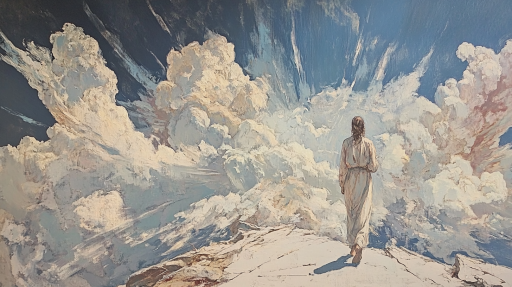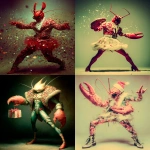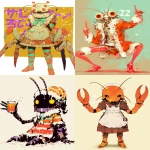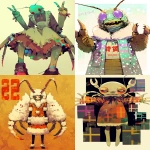Explore the Best AI Image Gallery

Reimagining Design: The Role of AI in Visual Creativity
The rise of artificial intelligence (AI) has brought about transformative changes across various sectors, and the creative industry is no exception. AI-generated images are challenging traditional notions of creativity and artistic expression, offering innovative tools that augment and inspire human designers. In this blog post, we'll explore the impact of AI on design, its potential uses, ethical considerations, and future trends that could redefine how we create and consume visual content.
The Impact on the Creative Industry
AI is revolutionizing the creative landscape by allowing designers to produce images and graphics at unprecedented speeds and scales. AI tools like DALL-E and Midjourney enable users to generate stunning visuals with a simple text prompt, significantly reducing the time and resources traditionally required for design work. This efficiency is particularly beneficial for industries such as marketing, advertising, and e-commerce, where visual content is paramount.
Moreover, AI enhances creativity by providing designers with fresh perspectives and concepts that they might not have considered. For instance, tools that analyze current design trends can suggest color palettes, imagery, and layout options, offering a collaborative synergy between human talent and AI capabilities. As a result, AI does not merely replace designers; it complements their skills, allowing them to explore new creative avenues and enhance their portfolios.
Potential Uses of AI in Design
AI-generated images have a wide array of applications within the design space. Some noteworthy uses include:
- Marketing Materials: Businesses can generate tailored visuals for campaigns, social media posts, and advertisements in a fraction of the time it would take a traditional designer.
- Product Design: AI can simulate user interactions, helping designers create products that resonate well with target audiences based on visual feedback.
- Personalization: AI algorithms can analyze consumer behavior and preferences, allowing brands to generate custom visuals tailored to individual users, leading to enhanced engagement.
- Prototyping: Advanced AI can produce quick mock-ups and prototypes, helping designers iterate their ideas faster during the design process.
Ethical Considerations
While AI brings numerous advantages to the table, it also raises ethical questions that the creative community must address. One major concern is the issue of authorship. As AI-generated images become more prevalent, who owns the rights to these works? If an AI tool creates an image based on a designer's input, does the designer hold the copyright, or does it reside with the developer of the AI system?
Another aspect to consider is the potential for AI to perpetuate biases present in the data it is trained on. If an AI system is fed images that predominantly reflect certain demographics or styles, it might inadvertently reproduce those biases in its outputs. This can lead to a lack of diversity in visual representations and limit the scope of creativity.
Future Trends in AI-Driven Design
As technology continues to evolve, the integration of AI in design will likely expand, giving rise to several trends:
- Increased Collaboration: The relationship between AI tools and human designers will deepen, as they begin to work more closely on projects, merging intuition with analytical insights.
- Real-Time Adaptation: Future AI tools may monitor user engagement with visuals in real-time, adjusting designs instantly based on user responses and preferences.
- Augmented Reality (AR) and Virtual Reality (VR): AI will play a critical role in immersive technologies, helping create highly interactive and visually captivating experiences that combine art and technology.
- Ethical Standards: The industry may develop comprehensive ethical guidelines to navigate the challenges brought forth by AI in design, ensuring fair use and representation.
In conclusion, AI-generated images are not just a passing trend; they represent a significant evolution in the creative landscape. As designers embrace these tools, the potential for innovation and newfound artistic expression expands exponentially. However, it is vital to approach this transition with a keen awareness of the ethical ramifications and an ongoing dialogue about the future of creativity in an AI-driven world. As we continue to explore the synergy between art and technology, the possibilities are boundless.



](https://images.ai-img.art/thumbnails/150/124afc0facac1c0c676099ab4d2aae88da73c9ba0b89d1f6de454d8b236458ef.webp)


